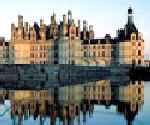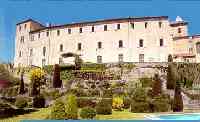|
|
|
|
André Le Nôtre III |
|
|
Versailles was André Le Nôtre's grand master
piece, he had unlimited space to create the most massive, yet
controlled park of the 17th century and for decades to
come. At Versailles, le Nôtre again utilized his standard plan
of a central axis with the palace as the focal point and diverging
side avenues, to create the ideal and perfect park.
Versailles' optical illusions were so dramatic that from the main
terrace of the palace you could no see most of the park; the park is
multi leveled with the palace raised above the park itself. Each
level the promeneur descends brings a new and magnificent small
park. "...The promeneur realizes that the garden, which had
appeared relatively flat when viewed from the building, is in
reality marked by a series of descending levels, which, once
discovered, reveal hitherto concealed embellishments in the form of
stairways, pools and sculptures.". The
main avenue is an optical illusion itself; when riding up the avenue
the viewer is struck by an impressive view of the palace, but to get
to the palace they actually have to ride through the many small
parks even though it appears that the main avenue runs straight into
the façade of the palace. In actuality the avenue splits around
pools, terraces and parterre. The parterre of Versailles is grand
feats of controlled nature. The shrubs are sculpted into geometric
designs with every aspect of the parterre's depicting the classical idea of
beauty.
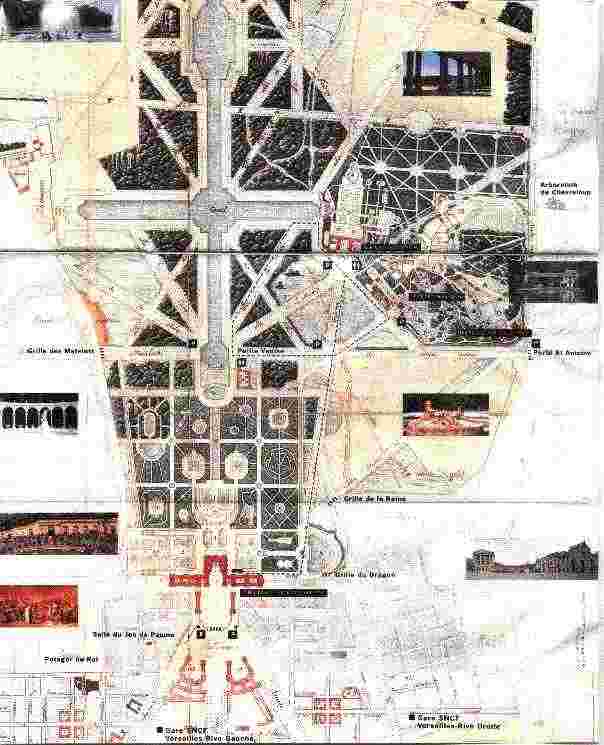 |
The gardens are controlled and ruled by
man, the best parts of nature were improved on to create the
ideal. The parterre is incorporated with pools and
fountains to create a more impressive display of nature at
its most beautiful.
Versailles was in its best, an
impressive conquering of chaotic nature and civilizing it.
Every aspect is controlled and carefully manicured, the
trees were cut to focus on the palace, the sculpted parterre
emphasized the intricate design of the façade and the
fountains and pools tied all elements together to create a
unity of parts and a magnificent complex. |
|
|
|
|
|
|
|
Versailles was no
small undertaking. It took Le Nôtre 33
years, hundreds of workers and thousands of hours to
complete. Transforming the harsh landscape of the original
hunting cabin into the classical idea for beauty was
nothing short of a miracle. The original land was described
as an, "unhealthy, swampy site, which had no view and almost
no water..." This unfit land was manipulated
and crafted into a magnificent example of classical beauty;
it was man over nature, where man was the ultimate victor.
Le Nôtre stuck to his rules for creating the perfect
'classical landscape'; he situated the park to fit in with
the landscape to best catch all the beauty that nature had
to offer. The lay of the land sloped west and he created
"board terraces to catch the sun during damp, cool winter
months; shaded woods with splashing fountains for the sake
of coolness on hot summer days; and out of door ballrooms
and concert halls to provide a setting for entertainment,
while dramatic stairways furnished backgrounds for the
pageant like parties."
Throughout the park Le Nôtre incorporated classical architecture, sculpture, vases
and pedestals to draw connections between the glory of the
Sun King and the magnificence of the classical Greek and
Roman rulers and gods, such as with the Fountain of Apollo. The fountain is a
representation of Louis
XIV and his connection to the gods and glory
of the ancients.
The wide vistas of the park and its continuation to the
horizon was a "pathway to heaven" which "expressed the
limitless power of the King..."
|
|
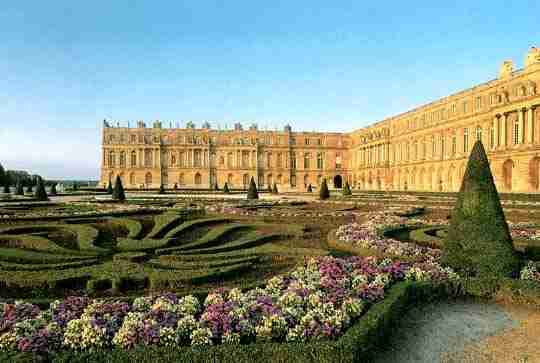 |
|
| |
Le Nôtre's garden at
Versailles |
|
| |
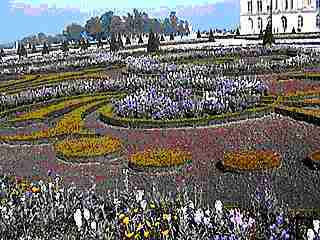 |
|
| |
Another view of Le Nôtre's
garden |
|
| |
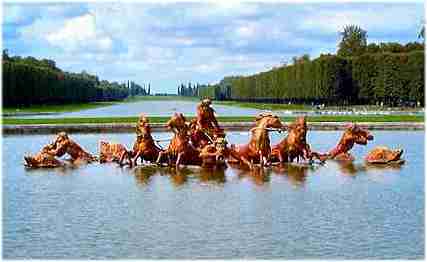 |
|
| |
Fountain of
Apollo at Versailles |
|
|
|
Louis XIV used the magnificent domination of nature at Versailles as a
connection to his divine right to rule and also to the power and
civilization of France. Le Nôtre used the park to display his skill
and love of the order, harmony and clarity of the classical idea.
Le Nôtre's classical schemes, and his desire to
create gardens were harmony and order prevailed over nature, cannot
be better displayed then in his grand works of Vaux-le-Vicomte and
Versailles. In these garden parks Le Nôtre employed a standard set
plan. Le Nôtre reviled in the fact of knowing that he had
transformed an uninhabitable and harsh landscape into a spectacular
and "flawless landscape". His gardens could be compared to a virtual
heaven on earth, everything was perfect, ordered, controlled and in
harmony with everything else. Nothing was out of place; his designs
epitomized the classical ideal of beauty.
View the Gardens
of Versailles
View the Gardens of
Vaux-le-Vicomté
<<< Return
|
|
|
|
|
|

